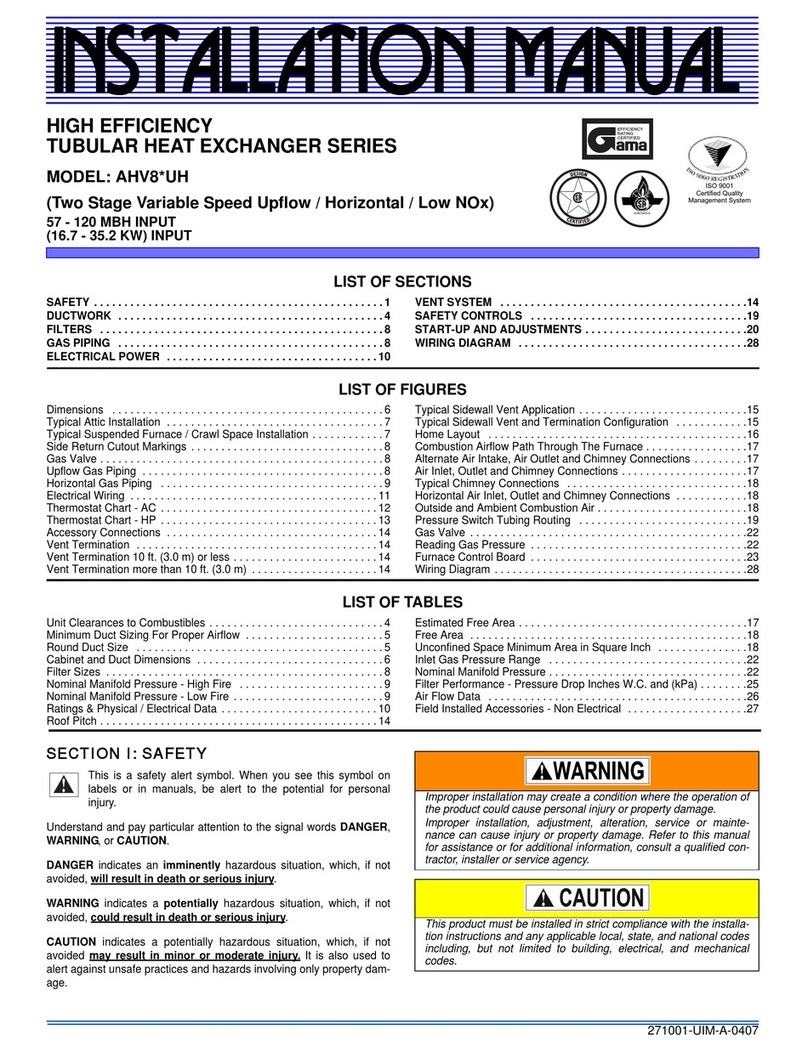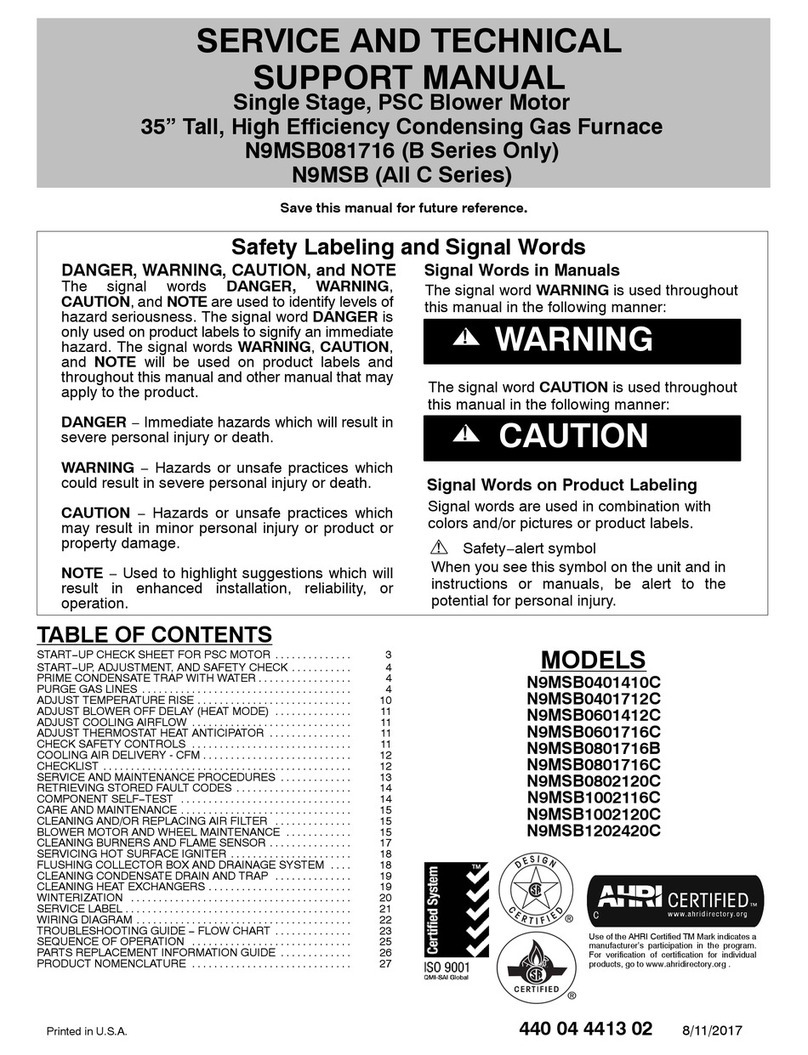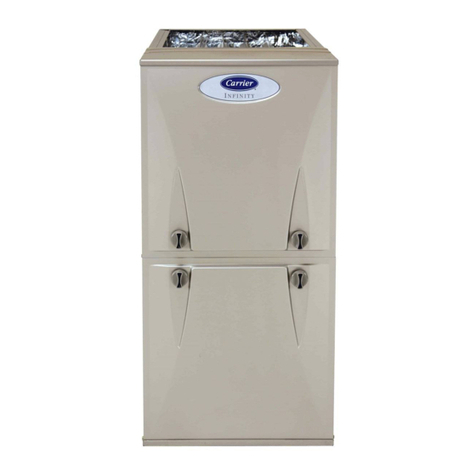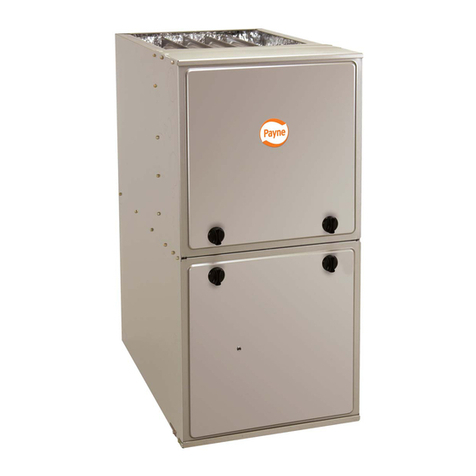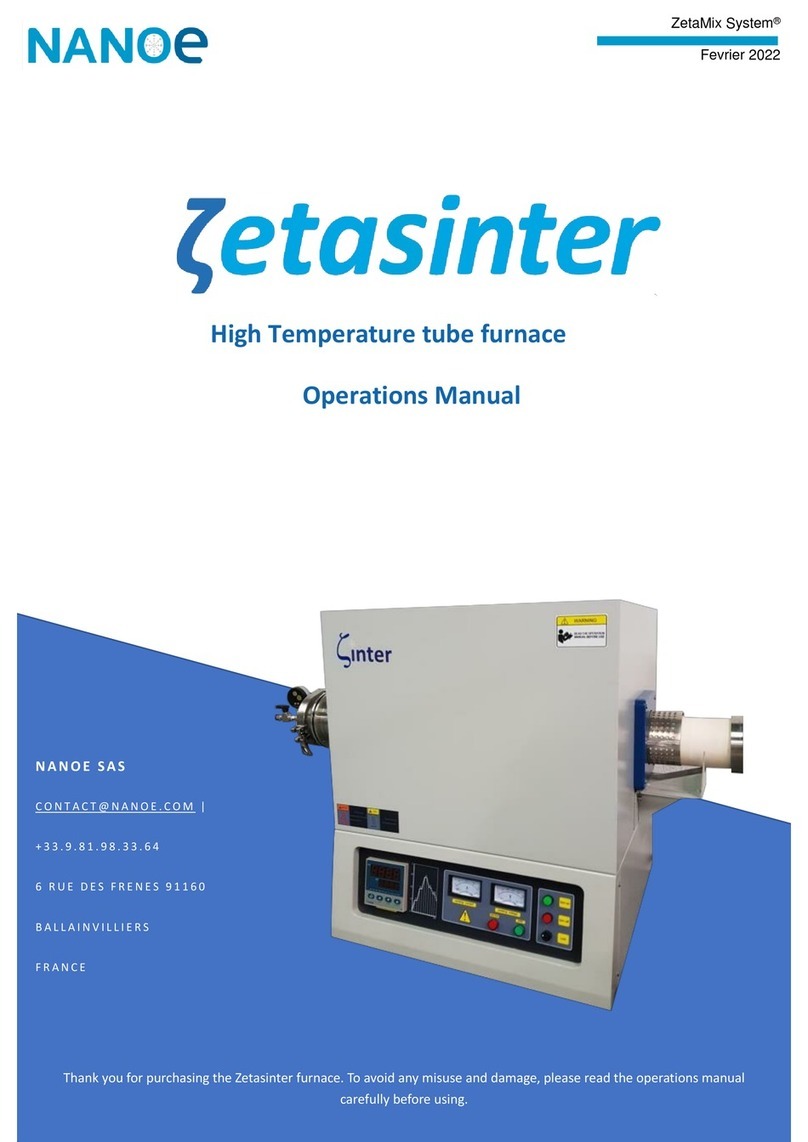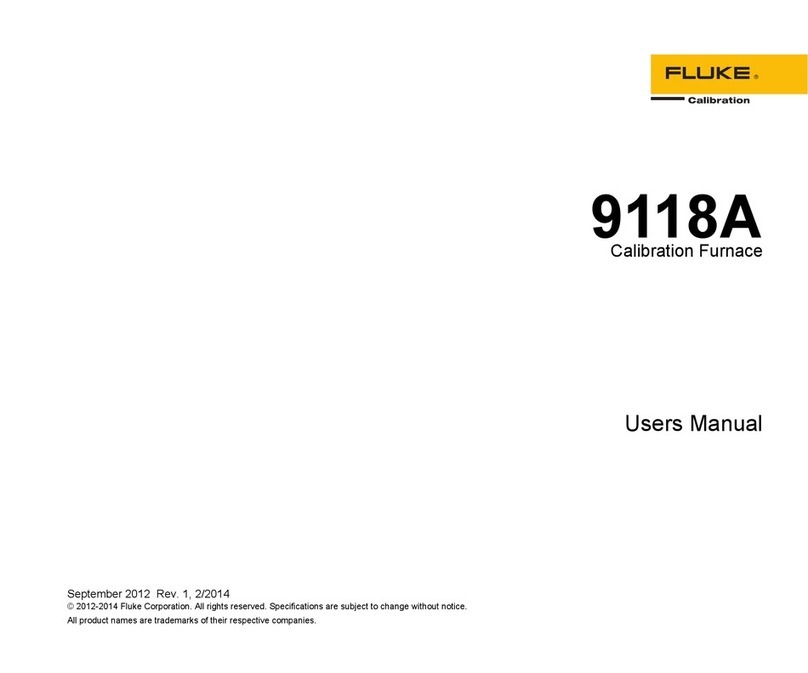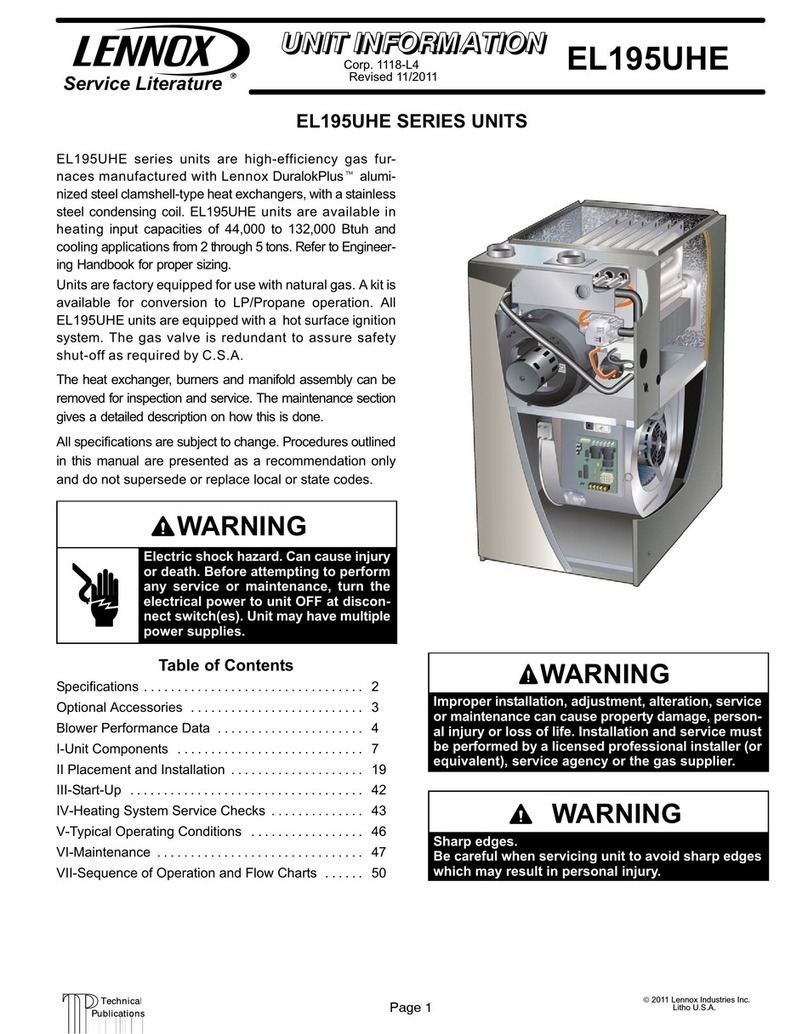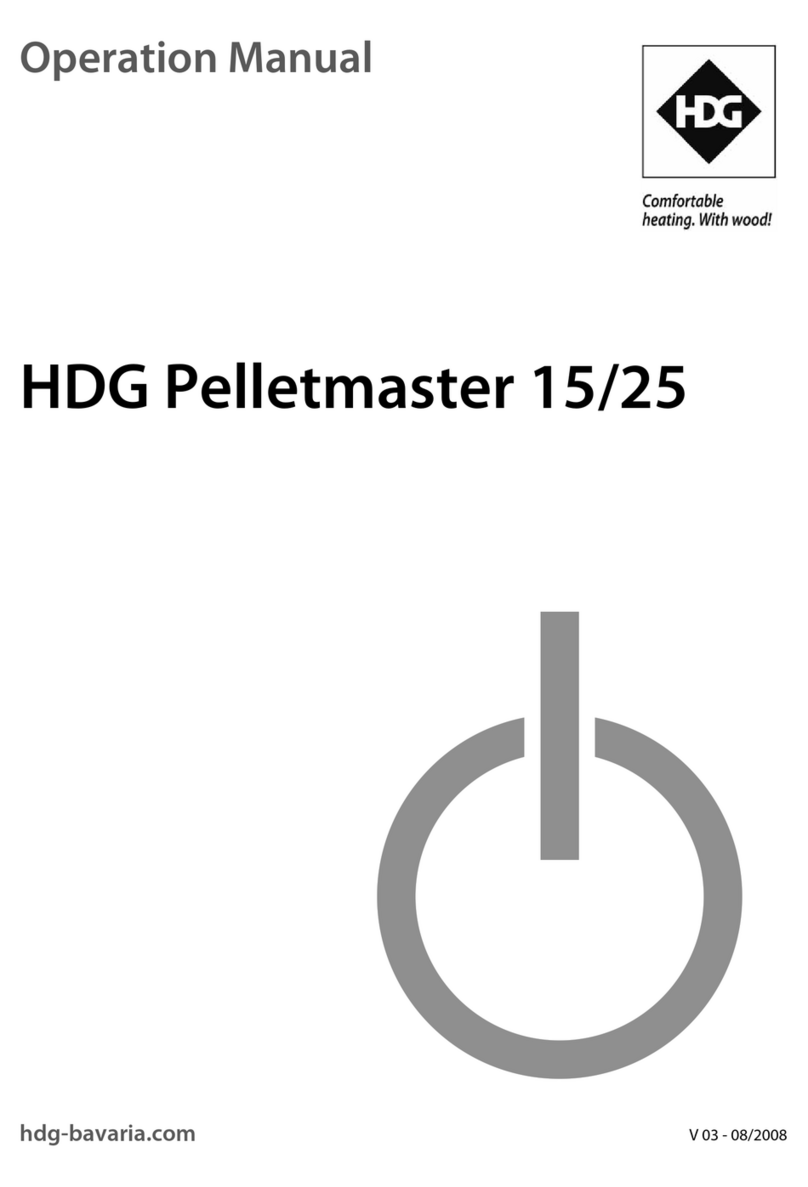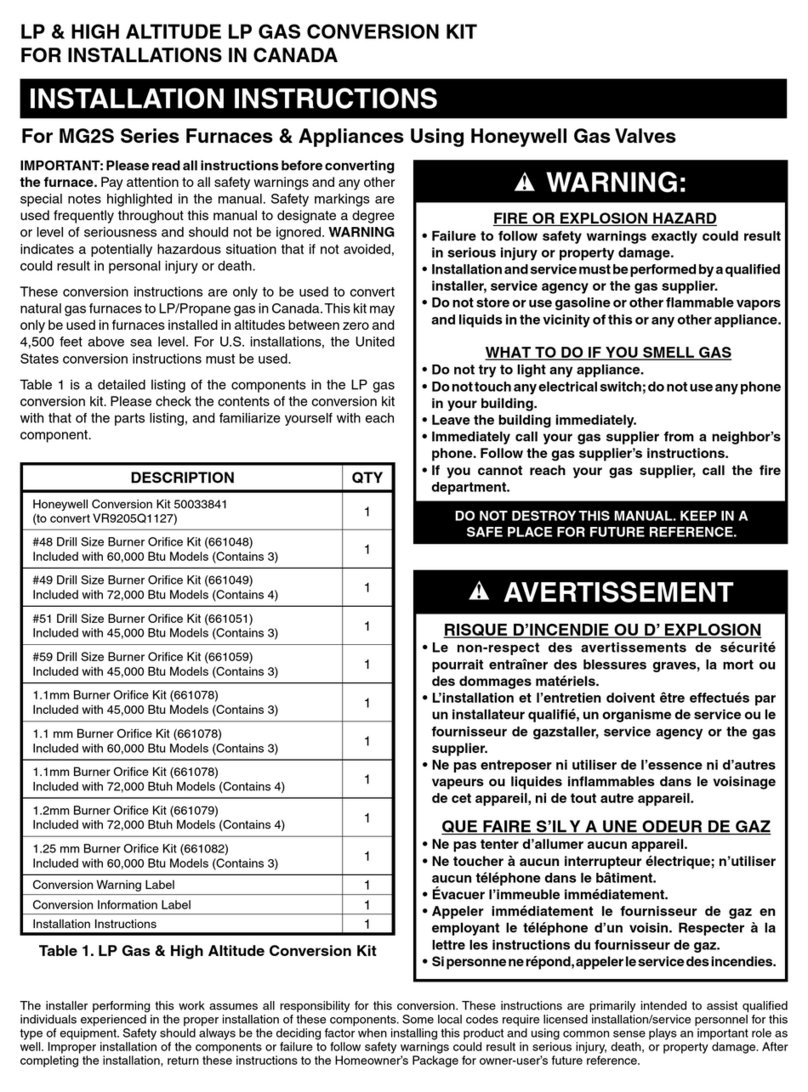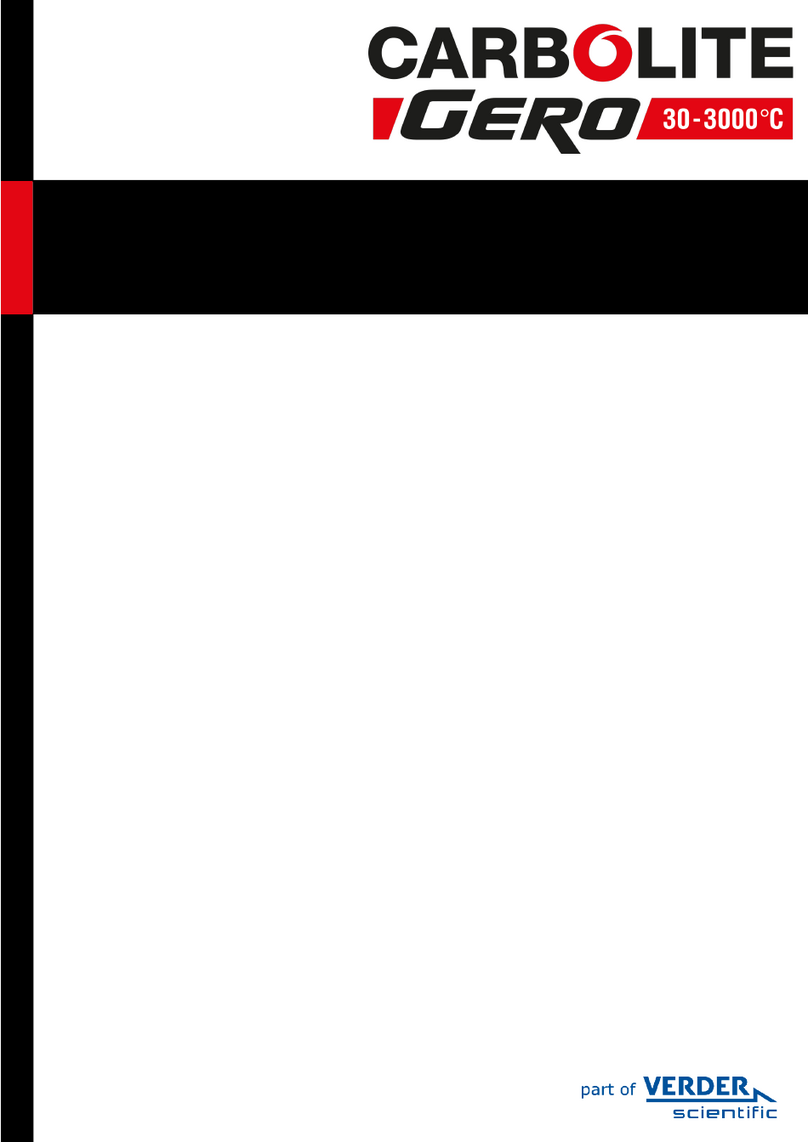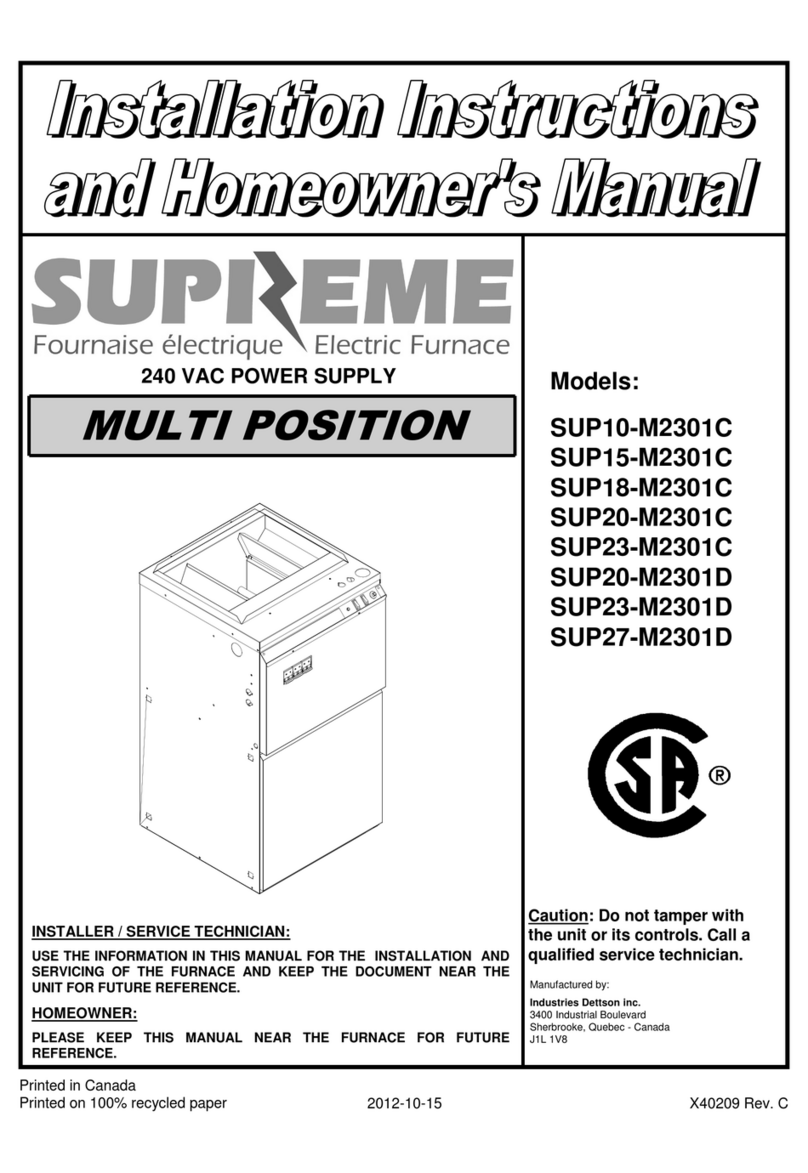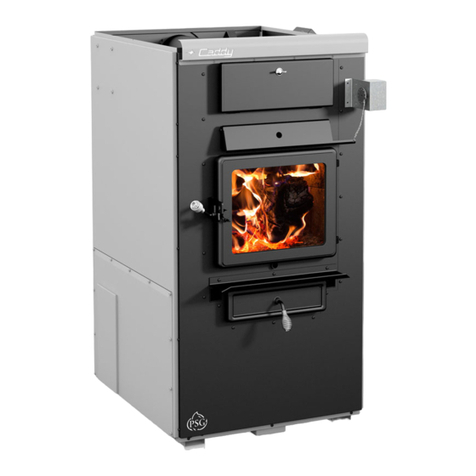
2
TABLE OF CONTENT
1. INTRODUCTION......................................................................................................................................................................... 4
2. APPLIANCE PERFORMANCE(1)................................................................................................................................................ 5
3. GENERAL FEATURES .............................................................................................................................................................. 6
4. SPECIFICATIONS...................................................................................................................................................................... 6
5. GENERAL TECHNICAL DATA.................................................................................................................................................. 7
6. FURNACE DIMENSIONS........................................................................................................................................................... 7
6.1. WOOD ONLY....................................................................................................................................................................... 7
6.2. COMBINEDWOOD-ELECTRIC .......................................................................................................................................... 8
7. CHIMNEY AND DRAFT.............................................................................................................................................................. 9
8. SAFETY RULES......................................................................................................................................................................... 9
8.1. GENERAL REQUIREMENTS.............................................................................................................................................. 9
8.2. ODOURFROM THE PAINT............................................................................................................................................... 10
8.3. ASH DISPOSAL................................................................................................................................................................. 10
8.4. CREOSOTE BUILD-UP AND REMOVAL........................................................................................................................... 10
8.5. SMOKE DETECTOR ......................................................................................................................................................... 10
8.6. DOOR GLASS ................................................................................................................................................................... 10
8.6.1. GLASS SPECIFICATIONS ................................................................................................................................................ 11
8.7. ASH DRAWER................................................................................................................................................................... 11
8.8. ASH GRATE ...................................................................................................................................................................... 11
9. INSTALLATION INSTRUCTIONS............................................................................................................................................ 13
9.1. BLOWER ASSEMBLY INSTALLATION (PA08521 SOLD SEPARATLY)........................................................................ 13
9.2. LINK BOARD INSTALLATION AND CONNECTION.......................................................................................................... 13
9.3. TOUCHSCREENINSTALLATION AND CONNECTION.................................................................................................... 17
9.4. HOT AIR PLENUM TEMPERATURE PROBE INSTALLATION AND CONNECTION(RTD).............................................. 18
9.5. SERVOMOTORINSTALLATION AND CONNECTION...................................................................................................... 19
9.6. UNITLOCATION ............................................................................................................................................................... 20
9.7. MINIMUM CLEARANCES TO COMBUSTIBLE MATERIALS ANDFLOOR PROTECTION............................................... 20
9.7.1. MINIMUM CLEARANCES TO COMBUSTIBLE MATERIALS............................................................................................. 21
9.7.2. MINIMUM CLEARANCES TO COMBUSTIBLES MATERIALS FORAIR RETURN DUCT................................................. 21
9.7.3. MINIMUM CLEARANCES TO COMBUSTIBLES MATERIALS FORHOTAIR PLENUM................................................... 21
9.7.4. FLOOR PROTECTION ...................................................................................................................................................... 22
9.8. FLUE AND BAROMETRIC DRAFTCONTROL CONNECTION......................................................................................... 23
9.9. ELECTRICAL CONNECTIONS.......................................................................................................................................... 24
9.10. BAROMETRICDAMPER................................................................................................................................................... 24
9.11. COMBUSTION AIR............................................................................................................................................................ 24
9.12. HOT AIR PLENUM............................................................................................................................................................. 25
9.13. PARALLEL INSTALLATION .............................................................................................................................................. 25
9.14. ELECTRICAL ELEMENT INSTALLATION(OPTIONAL).................................................................................................... 28
9.14.1. INTRODUCTION ............................................................................................................................................................... 28
9.14.2. CONNECTING THE ELECTRICAL ELEMENT .................................................................................................................. 28
10. THERMOSTAT INSTALLATION.............................................................................................................................................. 29
10.1. WOOD FURNACEONLY................................................................................................................................................... 29
10.1.1. COMBINATIONWOOD-ELECTRIC .................................................................................................................................. 29
10.2. INSTALLATION OF AN AIR CONDITIONING UNIT........................................................................................................... 30
10.3. HEATPUMP INSTALLATION............................................................................................................................................. 30
11. CONFIGURATION AND OPERATING INSTRUCTIONS ......................................................................................................... 30
11.1. CONTROLSSYSTEM ....................................................................................................................................................... 30
11.2. SYSTEM CONFIGURATION ............................................................................................................................................. 31
11.3. TOUCH SCREEN .............................................................................................................................................................. 31
11.3.1. ICONSDESCRIPTION...................................................................................................................................................... 32
11.3.2. LANGUAGE SELECTION AND TEMPERATURE UNIT..................................................................................................... 32
11.4. ACTIVATINGAUXILIARY HEATINGSOURCE AND SELECTION OF OPTIONS ............................................................. 32
11.4.1. TRANSITION TOANAUXILIARY HEAT SOURCE............................................................................................................ 33
11.4.2. TRANSITIONSETTINGS .................................................................................................................................................. 33
11.4.3. AUXILIARYHEAT SOURCE PRIORITIZATION ................................................................................................................ 33
11.4.4. EXTERNAL TEMPERATURE PROBE............................................................................................................................... 34
11.5. DISTRIBUTIONBLOWER SPEED CONFIGURATION...................................................................................................... 34
11.5.1. DISTRIBUTIONFAN SPEEDS .......................................................................................................................................... 34
11.6. SYSTEM BALANCING....................................................................................................................................................... 35
11.7. OPERATING INSTRUCTIONS.......................................................................................................................................... 35
11.7.1. HEAT MODE...................................................................................................................................................................... 35
11.7.2. COOL MODE..................................................................................................................................................................... 35
11.7.3. CIRC MODE (AIR CIRCULATION)........................................................................................................................................... 35
